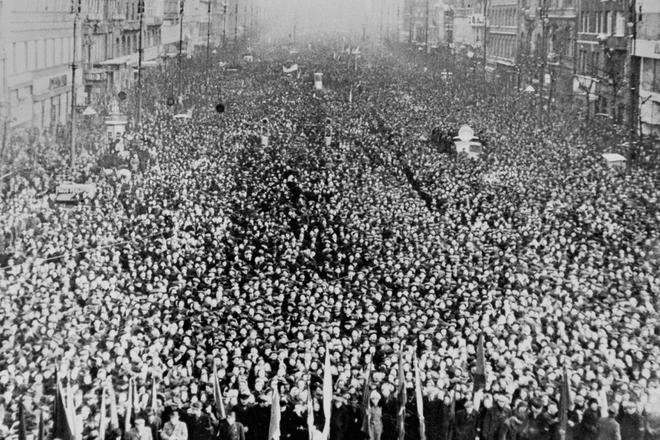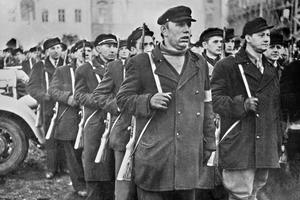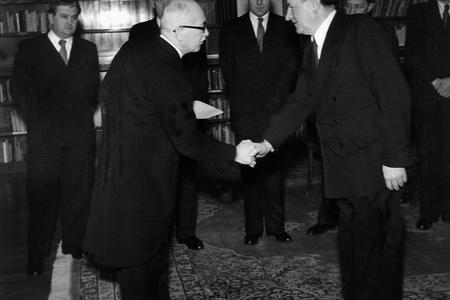In this interview, Jan Pešek answers the questions:
- What was the real support for Communists in Czechoslovakia in 1948?
- What role did the Soviet Union play in the coup?
-How did 40 years of totalitarian regime change Czechoslovakia?
-Are Slovaks aware of this part of their history?
- Could a similar coup happen in Europe even today?
The Slovak Spectator (TSS): Historians mostly agree that it was inevitable the Communists would take control of Czechoslovakia. The events of February only sped up the process.
Ján Pešek (JP): The Communists had been gaining decisive posts in the power structures - for instance, they controlled the interior ministry in the Czechoslovak government. They also managed to keep their strong positions after the 1946 elections. The fact that the coup happened in February 1948 is a coincidence. At that point, 12 non-Communist ministers resigned, which played into the hands of the Communists. [The then prime minister and leader of Communists] Klement Gottwald was over the moon seeing them commit such a folly. Communists could have waited for the elections in May and if that had not worked for them, they would have probably used force. They were simply waiting for an opportunity, and the opportunity presented itself with the unfortunate resignation of non-Communist ministers.
Jan Pešek (1949), a historian at the Slovak Academy of Sciences since 1994, in his work focuses mostly on the post-war history of Czechoslovakia and Slovakia. His work on Czechoslovakia under Communism include the book Odvrátená tvár totality (The Dark Side of Totalitarianism), and the Communist Party of Slovakia: History of a Political Subject. In 2000 he was awarded the Prize of the Slovak Academy of Sciences.
TSS: In the 1946 election, the Communist party gained 40 percent of the vote in the Czech Republic, while in Slovakia, the Democratic Party won with 62 percent. Why such a difference in the election results?
JP: That’s relative. Communists won 30 percent in Slovakia, more than they have ever had before the war. In 1946, the Democrats were de facto the only party standing against them. But the Democratic Party was not unified within, it comprised former agrarians, mostly Lutherans, who closed the April Agreement with the representatives of political Catholicism before the elections and promised the Catholics posts in the party leadership. So all the non-Communist votes were concentrated in this party. In the Czech Republic, the scene was more diverse. The Communists gained a lot, but other parties were rather strong there too. So, 30 percent in Slovakia and 40 percent in the Czech Republic is not such a big difference.
TSS: Nevertheless, the myth that Slovaks did not favour Communists but Czechs did, remains alive among the Slovak public today.
JP: Post-war Slovakia was still a prevailingly agricultural state, while the Czech lands were industrially developed. Slovakia caught up only in the 1980s. So in Slovakia, the working class was much smaller after the war, while the agrarian class prevailed. Slovakia was more religious, dominated by the Catholic Church. In the Czech lands, the Catholic Church did not play an important role.
TSS: On February 25, 1948, Klement Gottwald spoke to a crowd of some 100,000 supporters gathered at Wenceslas Square in Prague. Did that really reflect the support for the Communist regime in 1948?
JP: The three non-Communist governmental parties were prepared to fight the political fight in the parliament. But the Communists did not rely on that and they brought their offensive out to the streets, making the other parties incapable of reacting. They took to the factories and to the streets, and pressed for the general strike, while their opponents remained passive. Only a few hundreds of students came out, trying to get to the Castle to support President Beneš.
TSS: How long did the ovations last? The regime applied its non-democratic methods almost immediately…






